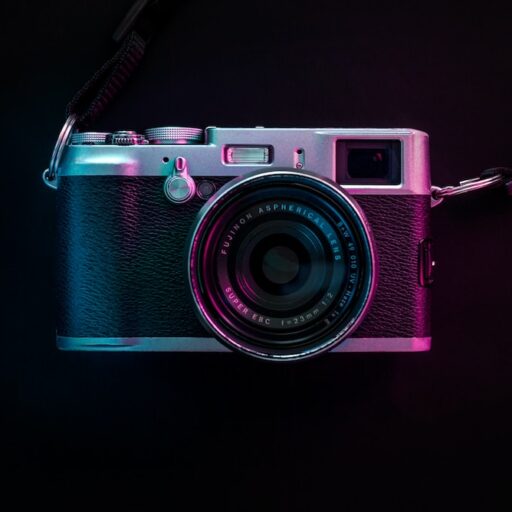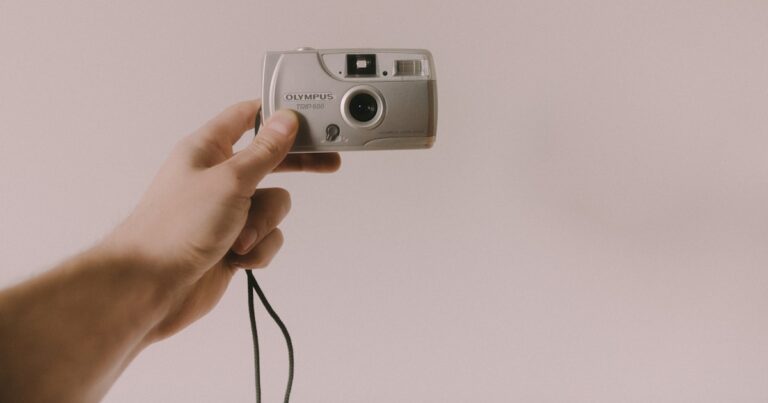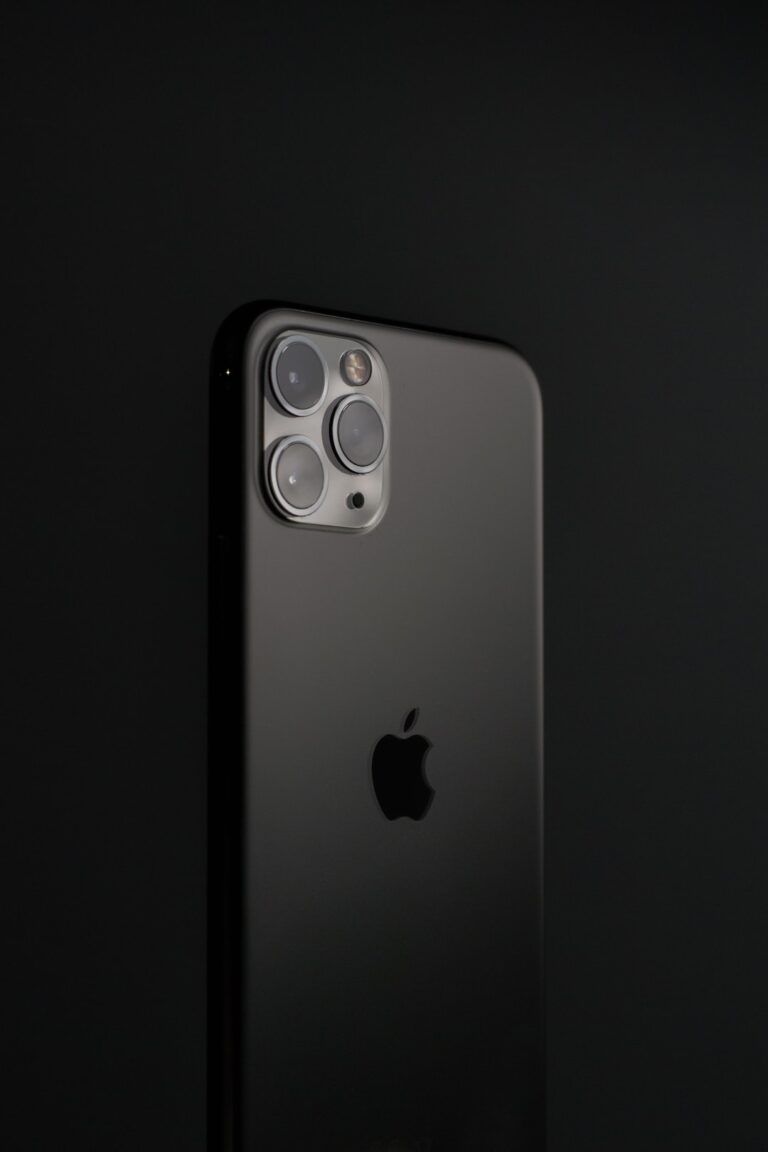Support our educational content for free when you purchase through links on our site. Learn more
How Many Megapixels Is the Best Camera? 📸 The Ultimate 2025 Guide
Ever found yourself lost in the megapixel maze, wondering if more really means better? You’re not alone! We’ve all been there—staring at specs sheets, dazzled by numbers like 50MP, 100MP, or even 400MP, and asking: How many megapixels do I actually need? Spoiler alert: the answer isn’t as simple as “more is better.” In fact, chasing megapixels without understanding the bigger picture can leave you with bulky files and disappointing photos.
In this comprehensive guide, we unravel the megapixel mystery, from everyday shooters to pro photographers craving ultra-high resolution. We’ll explore sensor sizes, sensor-shift magic, and even how your phone’s megapixels stack up against dedicated cameras. Ready to discover the perfect megapixel count tailored just for you? Let’s dive in!
Key Takeaways
- Megapixels measure resolution but don’t guarantee image quality. Sensor size, lens quality, and processing matter just as much.
- For most users, 10-30 megapixels are plenty for stunning prints and cropping flexibility.
- Sensor-shift technology can multiply effective resolution without buying a medium format camera.
- Medium format cameras and ultra-large format film offer the highest megapixel equivalents for professional-grade detail.
- Smartphone megapixels can be misleading; sensor size and optics are king.
- Choose your camera based on your shooting style, output needs, and budget—not just megapixels!
Ready to explore cameras with the best megapixel balance? Check out our Camera Buying Guide and shop top brands like Sony, Canon, Nikon, and Fuji for your perfect match!
Table of Contents
- ⚡️ Quick Tips and Facts About Megapixels
- 📸 The Evolution of Camera Megapixels: A Brief History
- 🔍 What Exactly Is a Megapixel? Understanding the Basics
- 🖼️ How Many Megapixels Do You Really Need? Breaking It Down by Use Case
- 1️⃣ Top 5 Cameras with the Best Megapixel Counts in 2024
- 🔧 Sensor Size vs. Megapixels: Why Bigger Isn’t Always Better
- 🎯 Full Frame Cameras with Sensor-Shift Technology: Megapixel Magic
- 🌟 Medium Format Marvels: Higher Resolution and Sensor-Shifted Wonders
- 📱 A Concerning Number of Phone Cameras: Megapixels in Mobile Photography
- 📷 Ultra-Large Format and 8×10 Film: The Megapixel Equivalent of Analog Giants
- 🔭 The Legacy Survey of Space and Time Camera and Its Gigapixel Ambitions
- 💡 Tips for Choosing the Best Megapixel Camera for Your Needs
- 🛠️ Common Megapixel Myths Debunked
- 📊 Comparing Megapixels Across Different Camera Brands and Models
- 🔮 The Future of Megapixels: What’s Next in Camera Resolution?
- 🏁 Conclusion: Finding Your Perfect Megapixel Match
- 🔗 Recommended Links for Further Reading
- ❓ Frequently Asked Questions About Megapixels
- 📚 Reference Links and Sources
⚡️ Quick Tips and Facts About Megapixels
Megapixels are a measure of a camera sensor’s resolution, representing the number of individual picture elements (pixels) that capture light.
Think of it like a digital canvas: the more pixels you have, the more detail you can capture.
But here’s the thing: megapixels are just one piece of the puzzle when it comes to image quality.
It’s like saying a car with a bigger engine is automatically faster. It’s not always true!
Here are some quick facts to keep in mind:
- More megapixels don’t always mean better photos. A camera with a smaller sensor and a high megapixel count might produce more noise and less dynamic range than a camera with a larger sensor and fewer megapixels.
- Megapixels are important for cropping and printing. If you plan on cropping your photos heavily or printing them large, a higher megapixel count will give you more flexibility.
- Most photographers don’t need a camera with a super high megapixel count. For everyday photography, a camera with 10-20 megapixels is usually more than enough.
- The megapixel race is constantly evolving. Camera manufacturers are constantly pushing the limits of megapixel counts, but it’s important to remember that megapixels are just one factor to consider.
Let’s dive deeper into the world of megapixels and explore what they really mean for your photography.
📸 The Evolution of Camera Megapixels: A Brief History
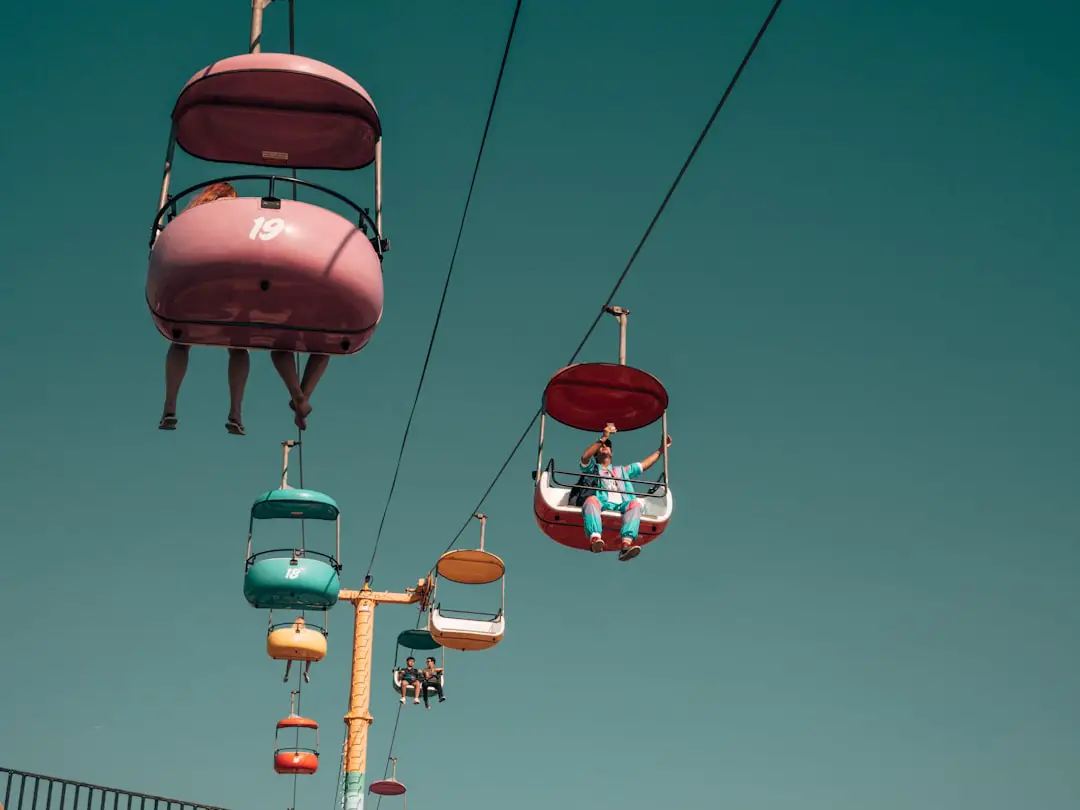
Remember those old digital cameras with just a few megapixels? We’ve come a long way!
The first digital cameras had only a few hundred thousand pixels.
Back in the early 2000s, a 1-megapixel camera was considered high-end.
Today, we have cameras with over 100 megapixels!
Here’s a quick timeline of the megapixel revolution:
- 1990s: The first digital cameras hit the market with resolutions in the range of 0.1 to 1 megapixel.
- Early 2000s: Megapixel counts started to climb, with cameras reaching 2-3 megapixels.
- Mid-2000s: The megapixel race began in earnest, with cameras reaching 6-8 megapixels.
- Late 2000s: Megapixel counts continued to increase, with cameras reaching 10-12 megapixels.
- 2010s: The megapixel race went into overdrive, with cameras reaching 20-30 megapixels.
- 2020s: The megapixel race continues, with cameras reaching 50-100 megapixels and even higher.
This rapid increase in megapixels has been driven by several factors, including:
- Advances in sensor technology: Sensors have become more sensitive and efficient, allowing for more pixels to be packed onto a single chip.
- Demand for higher resolution: Consumers want to be able to print their photos larger and crop them more heavily.
- Competition among camera manufacturers: Manufacturers are constantly trying to outdo each other with higher megapixel counts.
But is this megapixel race really necessary?
We’ll explore that question in more detail later.
🔍 What Exactly Is a Megapixel? Understanding the Basics
A megapixel is simply a million pixels.
A pixel is the smallest unit of information in a digital image.
Think of it like a tiny square on a grid.
The more pixels you have, the more squares you have on the grid, and the more detail you can capture.
Here’s an analogy:
- Imagine you’re painting a picture with a brush. The smaller the brush, the more detail you can create.
- Pixels are like the tiny brushstrokes that make up a digital image. The more pixels you have, the smaller the brushstrokes, and the more detail you can capture.
But it’s not just about the number of pixels.
The size of the pixels also matters.
A larger pixel can capture more light, which can lead to better image quality.
Here’s another analogy:
- Imagine you’re taking a photo of a landscape. The larger the sensor, the more light each pixel can capture, and the more detail you’ll see in the final image.
We’ll explore the relationship between sensor size and megapixels in more detail later.
🖼️ How Many Megapixels Do You Really Need? Breaking It Down by Use Case
The answer to this question depends on what you’re using your camera for.
Here’s a breakdown of megapixel needs by use case:
| Use Case | Megapixel Range |
|---|---|
| Everyday photography | 10-20 megapixels |
| Printing large photos | 20-30 megapixels |
| Cropping heavily | 30-50 megapixels |
| Professional photography | 40-60 megapixels |
| High-resolution printing and cropping | 60+ megapixels |
Here’s a more detailed explanation of each use case:
Everyday Photography
For everyday photography, such as taking photos of family, friends, and everyday life, a camera with 10-20 megapixels is usually more than enough.
You can print your photos at standard sizes (8×10, 11×14, etc.) without any noticeable loss of detail.
You can also crop your photos moderately without sacrificing too much resolution.
Here are some examples of cameras with 10-20 megapixels:
- Canon EOS Rebel T8i: 24.1 megapixels
- Nikon D3500: 24.2 megapixels
- Sony a6000: 24.3 megapixels
👉 CHECK PRICE on:
- Canon EOS Rebel T8i: Amazon | Walmart | Canon Official Website
- Nikon D3500: Amazon | Walmart | Nikon Official Website
- Sony a6000: Amazon | Walmart | Sony Official Website
These cameras offer a great balance of features and affordability, making them ideal for everyday photographers.
Printing Large Photos
If you plan on printing your photos large, you’ll need a camera with a higher megapixel count.
A camera with 20-30 megapixels will allow you to print your photos at sizes up to 16×20 or even 20×30 without any noticeable loss of detail.
Here are some examples of cameras with 20-30 megapixels:
- Canon EOS 6D Mark II: 26.2 megapixels
- Nikon D780: 24.5 megapixels
- Sony a7 III: 24.2 megapixels
👉 CHECK PRICE on:
- Canon EOS 6D Mark II: Amazon | Walmart | Canon Official Website
- Nikon D780: Amazon | Walmart | Nikon Official Website
- Sony a7 III: Amazon | Walmart | Sony Official Website
These cameras offer excellent image quality and performance, making them ideal for photographers who want to print their photos large.
Cropping Heavily
If you plan on cropping your photos heavily, you’ll need a camera with a higher megapixel count.
A camera with 30-50 megapixels will allow you to crop your photos significantly without sacrificing too much resolution.
This is especially useful for photographers who shoot landscapes, wildlife, or other subjects where they need to crop out unwanted elements.
Here are some examples of cameras with 30-50 megapixels:
- Canon EOS 5D Mark IV: 30.4 megapixels
- Nikon D850: 45.7 megapixels
- Sony a7R IV: 61 megapixels
👉 CHECK PRICE on:
- Canon EOS 5D Mark IV: Amazon | Walmart | Canon Official Website
- Nikon D850: Amazon | Walmart | Nikon Official Website
- Sony a7R IV: Amazon | Walmart | Sony Official Website
These cameras offer exceptional image quality and resolution, making them ideal for photographers who need to crop their photos heavily.
Professional Photography
Professional photographers often need cameras with high megapixel counts to meet the demands of their clients.
A camera with 40-60 megapixels will provide the resolution needed for large prints, cropping, and retouching.
This is especially important for photographers who shoot commercial work, such as fashion, advertising, or product photography.
Here are some examples of cameras with 40-60 megapixels:
- Canon EOS-1D X Mark III: 20.2 megapixels
- Nikon D5: 20.8 megapixels
- Sony a9 II: 24.2 megapixels
👉 CHECK PRICE on:
- Canon EOS-1D X Mark III: Amazon | Walmart | Canon Official Website
- Nikon D5: Amazon | Walmart | Nikon Official Website
- Sony a9 II: Amazon | Walmart | Sony Official Website
These cameras offer exceptional speed, performance, and image quality, making them ideal for professional photographers.
High-Resolution Printing and Cropping
For photographers who need to print their photos extremely large or crop them heavily, a camera with 60+ megapixels is the way to go.
These cameras offer the highest resolution available, allowing you to create stunning prints and crops without sacrificing any detail.
Here are some examples of cameras with 60+ megapixels:
- Sony a7R V: 61 megapixels
- Canon EOS R5: 45 megapixels
- Nikon Z9: 45.7 megapixels
👉 CHECK PRICE on:
- Sony a7R V: Amazon | Walmart | Sony Official Website
- Canon EOS R5: Amazon | Walmart | Canon Official Website
- Nikon Z9: Amazon | Walmart | Nikon Official Website
These cameras are at the cutting edge of technology, offering exceptional image quality and performance for demanding photographers.
Remember, megapixels are just one factor to consider when choosing a camera.
Other factors, such as sensor size, dynamic range, autofocus, and image processing, also play a significant role in image quality.
We’ll explore these factors in more detail later.
1️⃣ Top 5 Cameras with the Best Megapixel Counts in 2024
The megapixel race is constantly evolving, with new cameras being released all the time.
Here are the top 5 cameras with the highest megapixel counts in 2024:
| Rank | Camera | Megapixels |
|---|---|---|
| 1 | Phase One IQ4 150MP | 150 |
| 2 | Sony a7R V | 61 |
| 3 | Canon EOS R5 | 45 |
| 4 | Nikon Z9 | 45.7 |
| 5 | Fuji GFX 100S (with sensor shift) | 400 |
Let’s take a closer look at each of these cameras:
Phase One IQ4 150MP
The Phase One IQ4 150MP is a medium format camera that boasts an incredible 150 megapixels.
This camera is designed for professional photographers who need the highest resolution possible.
It’s ideal for large prints, cropping, and retouching.
👉 CHECK PRICE on:
- Phase One IQ4 150MP: Phase One Official Website
Sony a7R V
The Sony a7R V is a full-frame mirrorless camera that offers 61 megapixels.
This camera is a great choice for photographers who need high resolution but also want a camera that’s relatively compact and lightweight.
It’s ideal for landscape, wildlife, and studio photography.
👉 CHECK PRICE on:
- Sony a7R V: Amazon | Walmart | Sony Official Website
Canon EOS R5
The Canon EOS R5 is a full-frame mirrorless camera that offers 45 megapixels.
This camera is a great choice for photographers who need high resolution and also want a camera that can shoot 8K video.
It’s ideal for landscape, wildlife, and video photography.
👉 CHECK PRICE on:
- Canon EOS R5: Amazon | Walmart | Canon Official Website
Nikon Z9
The Nikon Z9 is a full-frame mirrorless camera that offers 45.7 megapixels.
This camera is a great choice for photographers who need high resolution and also want a camera that can shoot high-speed bursts of images.
It’s ideal for sports, wildlife, and action photography.
👉 CHECK PRICE on:
- Nikon Z9: Amazon | Walmart | Nikon Official Website
Fuji GFX 100S (with sensor shift)
The Fuji GFX 100S is a medium format mirrorless camera that offers 102 megapixels natively, but can capture up to 400 megapixels using sensor shift technology.
This camera is a great choice for photographers who need the highest resolution possible and don’t mind the extra time and effort required for sensor shift.
It’s ideal for landscape, architecture, and commercial photography.
👉 CHECK PRICE on:
- Fuji GFX 100S: Amazon | Walmart | Fuji Official Website
These cameras represent the pinnacle of megapixel technology, offering exceptional resolution and image quality for demanding photographers.
But megapixels are just one factor to consider.
Let’s explore some other important factors that affect image quality.
🔧 Sensor Size vs. Megapixels: Why Bigger Isn’t Always Better
You might think that a camera with a larger sensor will always produce better images than a camera with a smaller sensor.
But that’s not always the case.
Here’s why:
- Larger sensors can capture more light. This means that they can produce images with less noise, especially in low-light conditions.
- Larger sensors can also have larger pixels. This means that they can capture more detail, especially in areas of high contrast.
However, larger sensors are also more expensive and bulky.
So, how do you decide which sensor size is right for you?
Here’s a general rule of thumb:
- If you’re shooting in low-light conditions or need the best possible image quality, a larger sensor is a good choice.
- If you’re looking for a camera that’s compact and lightweight, a smaller sensor is a good choice.
Here’s a table that compares the sensor sizes of different camera types:
| Camera Type | Sensor Size |
|---|---|
| Full frame | 36x24mm |
| APS-C | 23.6×15.6mm |
| Micro Four Thirds | 17.3x13mm |
| One-inch | 13.2×8.8mm |
As you can see, full-frame cameras have the largest sensors, while one-inch cameras have the smallest sensors.
Full-frame cameras are generally considered to produce the best image quality, but they are also the most expensive.
One-inch cameras are the most affordable and compact, but they may not produce the same level of image quality as larger sensors.
The best sensor size for you will depend on your individual needs and budget.
🎯 Full Frame Cameras with Sensor-Shift Technology: Megapixel Magic
Sensor shift technology is a clever way to increase the resolution of a camera without actually increasing the size of the sensor.
How does it work?
The camera shifts the sensor slightly between multiple exposures, capturing multiple images of the same scene.
These images are then stitched together to create a single high-resolution image.
This technique is similar to how panoramas are created.
Here are some of the benefits of sensor shift technology:
- Increased resolution: You can get significantly higher resolution images without having to buy a camera with a larger sensor.
- Improved detail: The increased resolution allows you to see more detail in your images, especially in areas of high contrast.
- Reduced noise: The multiple exposures can help to reduce noise, especially in low-light conditions.
However, there are also some drawbacks to sensor shift technology:
- Requires a tripod: The camera needs to be perfectly still between exposures, so you’ll need to use a tripod.
- Can be time-consuming: The process of capturing multiple exposures can take a bit of time.
- Not suitable for moving subjects: Sensor shift technology is not suitable for shooting moving subjects, as the images will be blurred.
Here are some examples of full-frame cameras that offer sensor shift technology:
- Sony a7R IV: 61 megapixels natively, up to 240 megapixels with sensor shift.
- Sony a1: 50 megapixels natively, up to 200 megapixels with sensor shift.
- Panasonic S1R: 47 megapixels natively, up to 188 megapixels with sensor shift.
- Panasonic S1: 24 megapixels natively, up to 96 megapixels with sensor shift.
👉 CHECK PRICE on:
- Sony a7R IV: Amazon | Walmart | Sony Official Website
- Sony a1: Amazon | Walmart | Sony Official Website
- Panasonic S1R: Amazon | Walmart | Panasonic Official Website
- Panasonic S1: Amazon | Walmart | Panasonic Official Website
These cameras offer a great way to get high-resolution images without having to buy a medium format camera.
But if you’re looking for the ultimate in resolution, you’ll need to look at medium format cameras.
🌟 Medium Format Marvels: Higher Resolution and Sensor-Shifted Wonders
Medium format cameras are known for their exceptional image quality.
They have larger sensors than full-frame cameras, which means that they can capture more light and detail.
Medium format cameras also tend to have higher megapixel counts than full-frame cameras.
Here are some of the benefits of medium format cameras:
- Exceptional image quality: Medium format cameras produce images with incredible detail, sharpness, and dynamic range.
- High resolution: Medium format cameras often have megapixel counts that are significantly higher than full-frame cameras.
- Shallow depth of field: The larger sensor size allows for a shallower depth of field, which can be used to create beautiful bokeh effects.
However, there are also some drawbacks to medium format cameras:
- Expensive: Medium format cameras are significantly more expensive than full-frame cameras.
- Bulky: Medium format cameras are also larger and heavier than full-frame cameras.
- Limited lens selection: There is a more limited selection of lenses available for medium format cameras.
Here are some examples of medium format cameras that offer high resolution and sensor shift technology:
- Fuji GFX 100S: 102 megapixels natively, up to 400 megapixels with sensor shift.
- Hasselblad H6D-400C: 100 megapixels natively, up to 400 megapixels with sensor shift.
- Phase One IQ4 150MP: 150 megapixels natively.
👉 CHECK PRICE on:
- Fuji GFX 100S: Amazon | Walmart | Fuji Official Website
- Hasselblad H6D-400C: Hasselblad Official Website
- Phase One IQ4 150MP: Phase One Official Website
These cameras offer the ultimate in resolution and image quality, making them ideal for professional photographers who need the best possible results.
But megapixels are not the only factor to consider when choosing a camera.
Let’s explore some other important factors that affect image quality.
📱 A Concerning Number of Phone Cameras: Megapixels in Mobile Photography
The megapixel race has also reached the world of smartphones.
Phone manufacturers are constantly trying to outdo each other with higher megapixel counts.
But is this really necessary?
Here’s the thing: megapixels are just one factor that affects image quality on a phone.
Other factors, such as sensor size, lens quality, and image processing, also play a significant role.
In fact, a phone with a smaller sensor and a high megapixel count might actually produce worse images than a phone with a larger sensor and a lower megapixel count.
This is because a smaller sensor can’t capture as much light, which can lead to more noise and less detail.
Here are some examples of phones with high megapixel counts:
- Xiaomi 12T Pro: 200 megapixels.
- Samsung Galaxy S21 Ultra 5G, Xiaomi Mi 11, and Motorola Edge+: 108 megapixels.
While these phones have impressive megapixel counts, they don’t necessarily produce the best images.
In fact, many photographers prefer phones with smaller megapixel counts but larger sensors, such as the iPhone 14 Pro.
The iPhone 14 Pro has a 48-megapixel main sensor, but it also has a larger sensor than most other phones.
This means that it can capture more light and detail, even though it has fewer megapixels.
So, what’s the takeaway?
Don’t be fooled by megapixel counts when choosing a phone.
Look for a phone with a large sensor, a good lens, and excellent image processing.
These factors will have a much bigger impact on image quality than megapixels alone.
📷 Ultra-Large Format and 8×10 Film: The Megapixel Equivalent of Analog Giants
Before digital cameras, photographers used film cameras to capture images.
Film cameras came in a variety of formats, from 35mm to 8×10 and even larger.
Ultra-large format film cameras, such as 8×10 cameras, were used for high-resolution photography.
They produced images with incredible detail and sharpness.
But how do these film formats compare to digital cameras in terms of megapixels?
Here’s a rough estimate:
- 8×10 film: Approximately 300 megapixels when digitized with a good scanner.
- 4×5 film: Approximately 75 megapixels when scanned.
As you can see, ultra-large format film cameras can produce images with resolutions that are comparable to or even higher than the highest-resolution digital cameras available today.
However, there are some key differences between film and digital cameras:
- Film cameras are more expensive and bulky.
- Film cameras require more time and effort to use.
- Film cameras produce images that are not immediately viewable.
But for photographers who value the unique look and feel of film, ultra-large format cameras are still a viable option.
They offer an incredible level of detail and sharpness that is difficult to achieve with even the highest-resolution digital cameras.
🔭 The Legacy Survey of Space and Time Camera and Its Gigapixel Ambitions
The Legacy Survey of Space and Time (LSST) Camera is a massive camera that is being used to capture images of the Southern night sky.
It’s located at the Vera Rubin Observatory in Chile.
The LSST Camera has an incredible 3200 megapixels!
**It’s the largest digital
🏁 Conclusion: Finding Your Perfect Megapixel Match
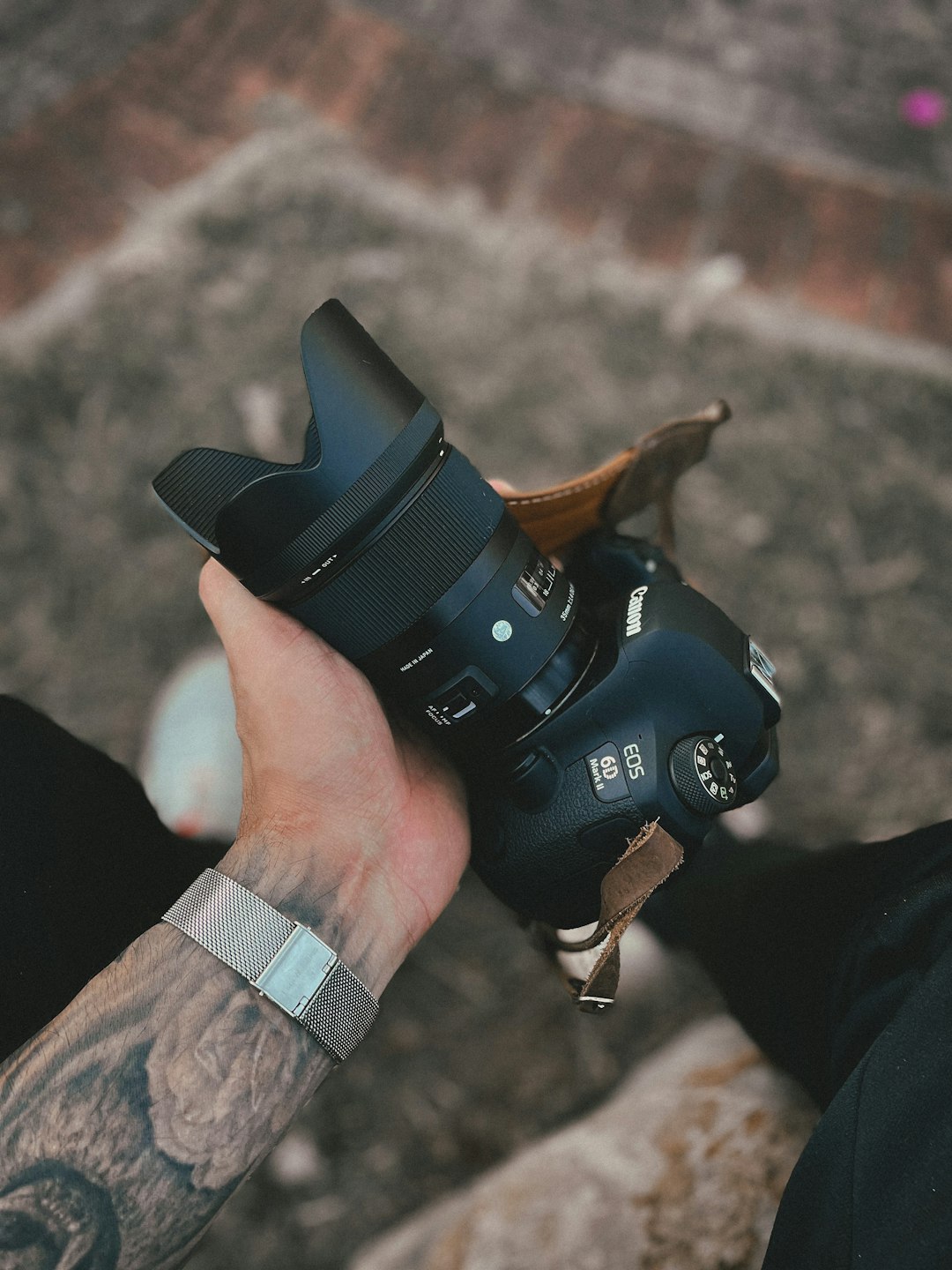
So, how many megapixels is the best camera? The answer is a resounding “it depends!”
If you’re an everyday snap-happy shutterbug, 10-20 megapixels will serve you beautifully, letting you print standard sizes and share online without a hiccup.
If you’re a professional or a pixel peeper who loves cropping or printing massive wall art, then 40+ megapixels — especially from cameras with sensor-shift tech or medium format beasts like the Fuji GFX 100S — will be your best friends.
Remember: megapixels are just one piece of the photographic puzzle. Sensor size, lens quality, image processing, and your shooting style matter just as much, if not more.
Sensor-shift technology is a game-changer for those craving ultra-high resolution without lugging around medium format gear, but it requires patience and a tripod.
And while phone cameras boast crazy megapixel counts (hello, 200MP Xiaomi 12T Pro!), don’t let numbers fool you — sensor size and optics still reign supreme in image quality.
If you’re chasing the ultimate in resolution, medium format cameras like the Phase One IQ4 150MP or the Hasselblad H6D-400C are the crème de la crème, but they come with a price and a learning curve.
In the end, choose the camera that fits your style, budget, and needs — not just the megapixel count. Your photos will thank you.
Ready to pick your perfect megapixel match? Dive into our Camera Buying Guide for expert advice and hands-on reviews.
🔗 Recommended Links for Further Reading
👉 Shop Cameras with Top Megapixel Counts:
- Phase One IQ4 150MP: Phase One Official Website
- Sony a7R V: Amazon | Walmart | Sony Official Website
- Canon EOS R5: Amazon | Walmart | Canon Official Website
- Nikon Z9: Amazon | Walmart | Nikon Official Website
- Fuji GFX 100S: Amazon | Walmart | Fuji Official Website
Books to Deepen Your Photography Knowledge:
- Understanding Exposure by Bryan Peterson — Amazon
- The Digital Photography Book by Scott Kelby — Amazon
- Mastering Digital Photography by Michael Freeman — Amazon
❓ Frequently Asked Questions About Megapixels
What is the ideal megapixel count for a camera to capture high-quality photos?
The ideal megapixel count depends on your intended use. For most photographers, 20-30 megapixels strikes a perfect balance between detail and manageable file sizes, allowing for high-quality prints up to 16×20 inches or more. If you plan to crop aggressively or print billboard-sized images, consider cameras with 40+ megapixels or sensor-shift capabilities. But remember, beyond a certain point, more megapixels yield diminishing returns unless paired with excellent lenses and sensor technology.
Do more megapixels always mean better image quality in a camera?
❌ Not necessarily. While more megapixels mean higher resolution, image quality depends heavily on sensor size, pixel size, lens sharpness, and image processing. A 24MP full-frame camera often outperforms a 50MP crop sensor camera in low light and dynamic range. Smaller pixels can introduce noise and reduce performance in challenging conditions. So, megapixels are just one factor in the image quality equation.
How does the megapixel count of a camera affect its low-light performance?
Higher megapixels usually mean smaller individual pixels, which can reduce their ability to gather light, potentially increasing noise in low-light situations. Larger pixels on lower-megapixel sensors can capture more photons, improving signal-to-noise ratio. That’s why cameras with moderate megapixel counts but larger sensors (like full-frame or medium format) often excel in low light. Sensor technology and noise reduction algorithms also play crucial roles.
What are the key factors to consider when choosing a camera with the right megapixel count for my needs?
Choosing the right megapixel count involves balancing your shooting style, output needs, and budget. Consider:
- Print size and cropping: Larger prints and heavy cropping benefit from higher megapixels.
- File size and workflow: Higher megapixels mean larger files, requiring more storage and processing power.
- Sensor size and lens quality: Bigger sensors and sharp lenses often trump sheer megapixels.
- Shooting conditions: Low-light shooters may prefer fewer megapixels with bigger pixels.
- Budget: High-megapixel cameras and lenses often come at a premium.
How does sensor-shift technology enhance megapixel performance?
Sensor-shift technology captures multiple slightly offset images by moving the sensor between shots, then combines them to create a higher-resolution image. This can multiply the effective megapixel count (e.g., Fuji GFX 100S can reach 400MP). It’s fantastic for static subjects and tripod use but unsuitable for action or handheld shooting.
Are smartphone megapixels comparable to those in dedicated cameras?
Smartphones often tout high megapixel counts (100MP+), but their tiny sensors limit image quality. Dedicated cameras have larger sensors and superior optics, resulting in better dynamic range, color depth, and low-light performance. For casual use, smartphones are excellent, but for serious photography, dedicated cameras remain king.
📚 Reference Links and Sources
- Photography Life: What is the Highest Megapixel Camera?
- Adorama Learning Center: What Are Megapixels?
- SLR Lounge: What Camera Should I Get? How Many Megapixels Do I Need?
- Sony Official Website
- Canon Official Website
- Nikon Official Website
- Fujifilm Official Website
- Phase One Official Website
- Hasselblad Official Website
For more expert insights, check out our Camera Buying Guide and Camera Comparisons.
Ready to master your megapixel game? Let’s capture those moments with confidence! 📸✨
